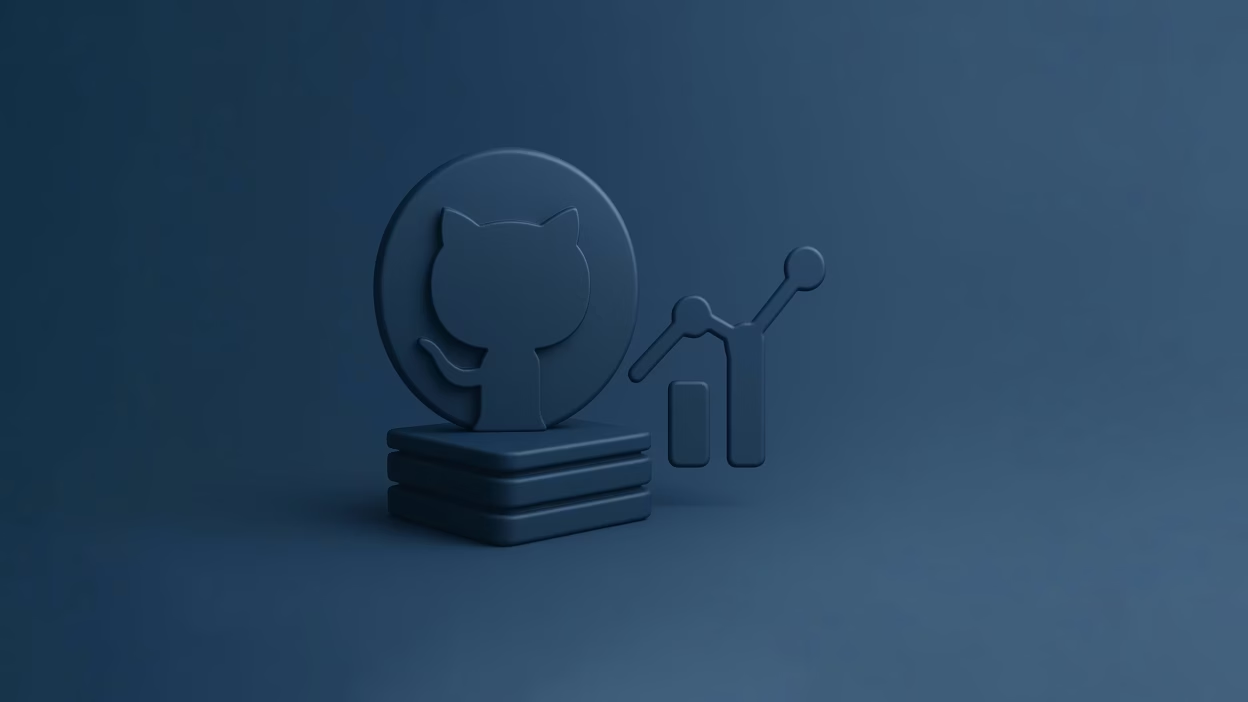Imagine you’re just starting out as a data scientist. You’ve spent time learning pandas, played around with some machine learning models, and now you’re ready to share what you’ve learned.
You open LinkedIn. You post your fancy new certification badge. Maybe even update your résumé.
And then it hits you: Where’s the proof?
No, not a bullet point that says “Built machine learning models”—actual, click-this-and-see proof.
That’s where GitHub strolls onto the stage, sipping a latte and looking suspiciously like your secret weapon.
Why GitHub Isn’t Just for Developers (and Why You Should Care)
Quick gut-check: If you think GitHub is only for hardcore software engineers…you’re not alone.
I used to think the same thing. In my early days, GitHub felt like this intimidating dungeon where C++ wizards and backend sorcerers roamed. I tiptoed around it, sticking to my Jupyter notebooks like a scared cat clinging to a tree branch.
Huge mistake.
Because here’s the truth: GitHub is the portfolio for data scientists now.
Recruiters check it. Hiring managers peek. Senior data scientists who might one day mentor you (or recommend you) definitely look.
It’s your living, breathing proof of skills—and better yet, it’s public, searchable, and scalable.
Plus, let’s be real: nothing screams “I’m serious about data” quite like a tidy GitHub full of well-documented projects.
OK, So Where Do You Start Without Looking Like a Total Newbie?
Let’s dive into the good stuff: how to build your GitHub profile from day one—even if you’re still figuring out the difference between .iloc and .loc (we’ve all been there).
1. Treat Your GitHub Like a Personal Lab Notebook
Forget about trying to make everything perfect at first. GitHub isn’t just a trophy shelf—it’s a lab.
It’s messy. It’s experimental. It’s alive.
Every time you complete a project—even a tiny one—push it to GitHub.
Working through Kaggle competitions? Upload your notebooks. Trying a new clustering technique? Upload it. Doing a course project? Upload that too.
But here’s the catch: organize it a little.
One repo per project. Clear folder structure (/data, /notebooks, /scripts).
And always—I mean always—include a README.md.
Think of the README as the story behind your experiment: What was the project? What problem were you solving? How did you approach it?
Even a three-line README is miles better than nothing.
Quick Tip: Draft your README like you’re explaining the project to a curious friend over WhatsApp. Keep it real, not formal.
2. Don’t Just Dump Notebooks—Make Them Tell a Story
Ah, the classic mistake: Upload a .ipynb file that’s basically 200 lines of “cell after cell after cell,” with variable names like df2_final_final_copy.ipynb.
Recruiters won’t read your mind, and your future self will definitely forget what df2_final_final_copy was supposed to mean.
Instead, slow down and narrate inside the notebook itself.
Use Markdown cells generously:
- Summarize what each major section is doing.
- Explain weird decisions (“I used median instead of mean because of outliers”).
- Flag places you struggled (“Tried X approach here but it didn’t work because Y”).
This isn’t just for others—it’ll help you build a habit of thinking like a real scientist, not just a code junkie.
And yes, cleaning up notebooks before pushing them? Absolutely worth the extra 20 minutes. Future you says thanks.
3. Create Small, Focused Projects Instead of Monster Repos
One of the most reassuring things I ever heard was this:
“You don’t need to build the next Netflix recommendation engine to impress people.”
Honestly, smaller projects done well are often way more powerful.
Here’s something you’ll love: Pick one tiny data problem and solve it cleanly.
Examples that rock on GitHub:
- An EDA (Exploratory Data Analysis) report on a weird, real-world dataset (like UFO sightings or Spotify song trends).
- A simple linear regression predicting house prices—but with killer visualizations.
- A tidy classification project on a personal dataset (dog breeds, email spam, whatever).
Each repo becomes a crystal-clear, self-contained story.
Way easier for someone to browse through and think, “Hey, this person gets it.”
Quick Tip: Think of each GitHub repo like a short story, not a novel.
4. Start Using Git and GitHub the Right Way Early
Look, nobody expects you to master Git commands on day one.
(Heck, I once broke my entire repo because I panicked and tried git reset --hard during a live coding session. 0/10, do not recommend.)
But getting into good habits now will pay off big time later.
Focus on these simple habits:
- Commit early, commit often. Don’t hoard changes like a squirrel hiding nuts.
- Write useful commit messages. Instead of “Update,” say “Add feature: cross-validation with stratified folds.”
- Branch and merge properly. Even if you’re solo, practicing with branches makes you Git-confident fast.
Honestly, even light Git fluency is an instant flex when you start collaborating professionally.
5. Pin Your Best Projects to Your Profile
This one’s a game-changer that tons of people miss.
GitHub lets you “pin” repositories to your profile page.
This means you can curate what visitors see first, instead of dumping them into a wall of half-finished experiments.
Pin 3-6 of your proudest, cleanest, most you projects.
Quality > quantity here. Always.
Your pinned section becomes your mini-portfolio—your highlights reel.
If a recruiter’s in a rush (and they always are), they’ll glance at that and make a snap judgment.
Make that judgment count.
6. Bonus Moves That Make You Look Like a Seasoned Pro
If you’re feeling spicy (and you should), sprinkle in a few more moves:
- Write blog posts or tutorials in your repos. (Even short ones! Explaining how you cleaned a messy dataset shows massive maturity.)
- Contribute to open-source data projects. (Tiny bug fix? Updating a README? It all counts.)
- Use GitHub Actions for simple automation. (Like auto-running Jupyter Notebooks. Trust me, it sounds way fancier than it is.)
- Host your portfolio with GitHub Pages. (It’s free. It’s fast. It makes you look 200% more legit.)
None of these are “must-dos” right away, but they’re there when you want to take things from “solid” to “wow.”
TL;DR: How to Not Look Like a Rookie on GitHub as a Data Scientist
GitHub isn’t just for developers—it’s where serious data scientists show their work.
Start from Day 1 by thinking of it as your personal lab, not your museum of perfection.
- Upload often, organize smartly, and narrate your notebooks like a storyteller.
- Build small but mighty projects.
- Learn Git basics—enough to not panic when something breaks.
- Curate your pinned projects like a proud chef showing off signature dishes.
And remember: Nobody was born GitHub-savvy.
Everyone sucked at it first. (My first repo was literally titled Data-Project-Thingy. Real creative.)
The ones who win? They’re just the ones who showed up consistently, messy at first but determined to make it better each time.
You’ve got this.





